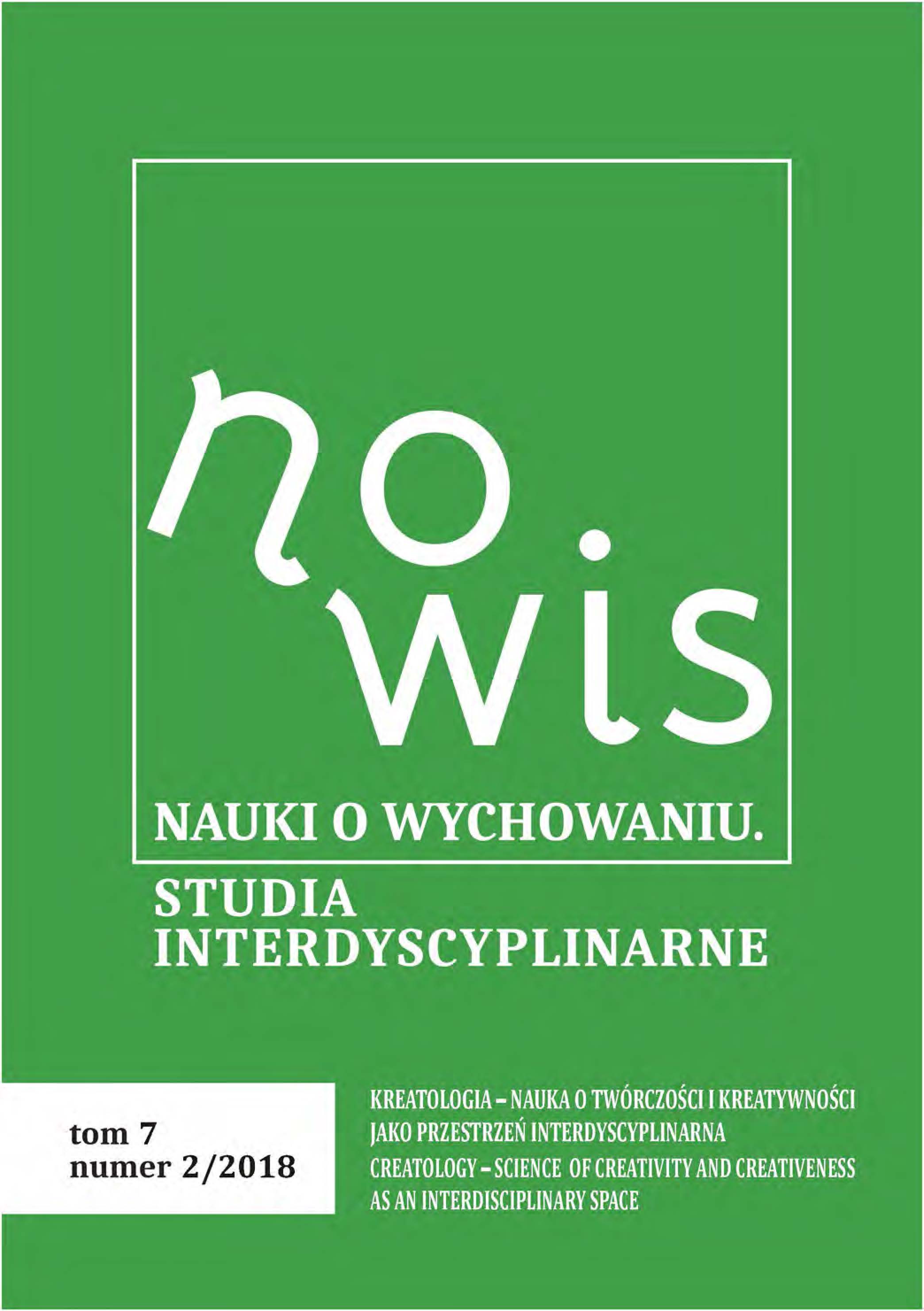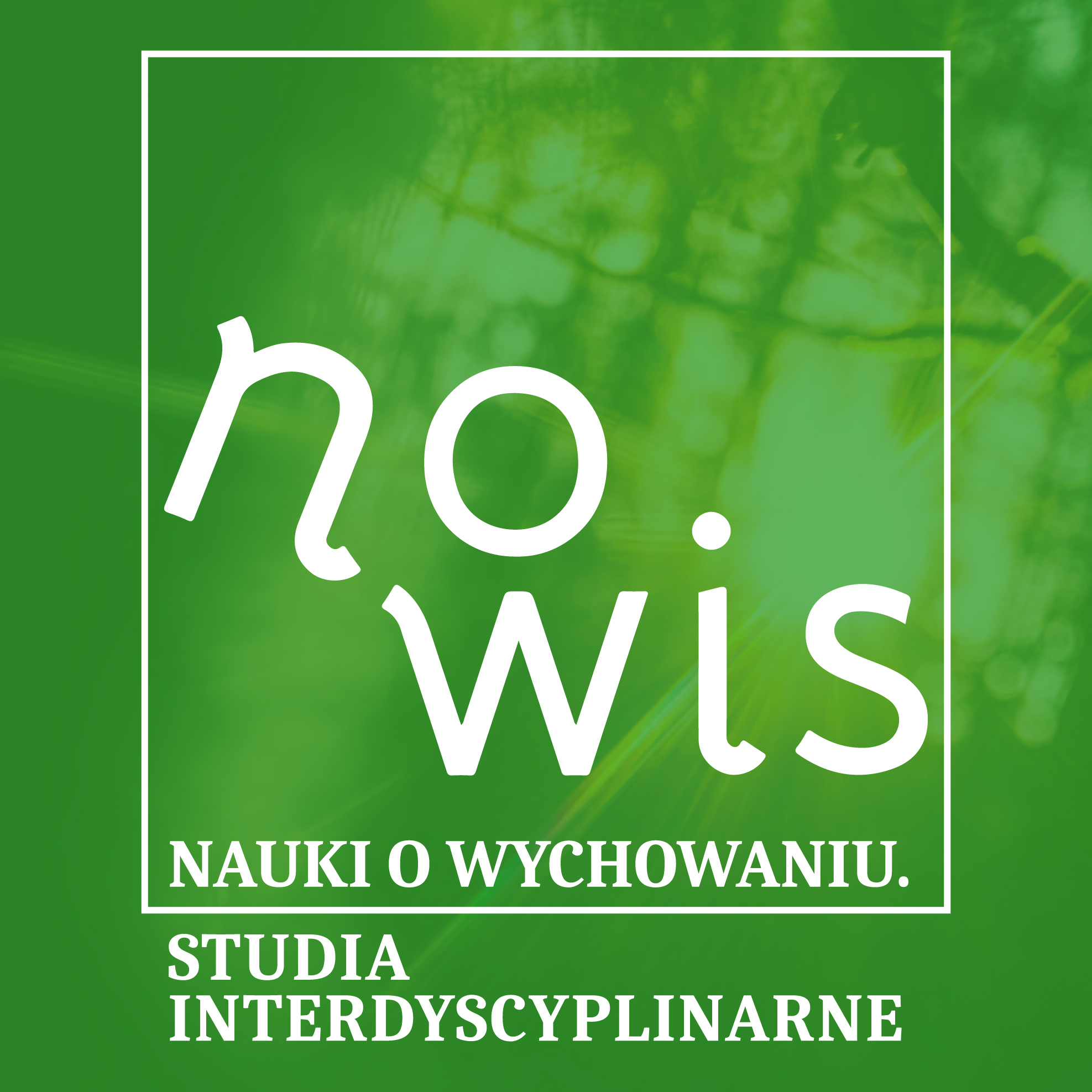Nauczanie dla twórczości: Rozwijanie kreatywności poprzez doświadczenie w tworzeniu wśród studentów psychologii i innych kierunków
DOI:
https://doi.org/10.18778/2450-4491.07.06Słowa kluczowe:
kreatywność, mini-c, little-c, edukacja, nauczanie, uczenie przez doświadczenieAbstrakt
Przemiany w pedagogice wywołane wprowadzeniem tak zwanych umiejętności XXI wieku wywarły wpływ na nauczanie na poziomie od podstawowego po wyższe. Zgodnie z tym, co pisze Thompson (2014), nauczyciele akademiccy planujący kursy i programy nauczania powinni odpowiednio dostosować podejście metodyczne, aby takie umiejętności skutecznie rozwijać. W niniejszym artykule proponuję, aby do nauczania wiedzy i umiejętności z zakresu psychologii twórczości wykorzystać podejście zwane pedagogiką zaangażowania (por. z kształceniem podmiotowym, Stasiak 2005). Celem tego podejścia jest rozwój umiejętności twórczych oraz umiejętności skutecznego i głębokiego uczenia się poprzez zaangażowanie, rozwijanie motywacji oraz tworzenie. Główna część artykułu poświęcona jest opisowi trzech grup zadań zaprojektowanych na potrzeby kursu Psychologia Twórczości, przy współpracy Dr Heather Snyder. Zadania te obejmują prowadzenie dziennika, zadania związane z twórczym projektem oraz warsztaty twórczego rozwiązywania problemów. W dalszej części artykułu staram się pokazać, że te zadania – odpowiadające założeniom pedagogiki zaangażowania – nie tylko ułatwiają przyswajanie wiedzy i umiejętności akademickich, ale przede wszystkim rozwijają kreatywność na poziomie płynnym i skrystalizowanym.
Bibliografia
Association of American Colleges and Universities (2013, April) It takes more than a major: Employer priorities for college learning and student success, http://www.aacu.org/leap/public_opinion_research.cfm
Google Scholar
Beghetto R. A. (2006) Creative Self-Efficacy: Correlates in Middle and Secondary Students, “Creativity Reasearch Journal”, 18: 447–457.
Google Scholar
Beghetto R. A., Kaufman J. C. (2010) Broadening conceptions of creativity in the classroom in: Nurturing creativity in the classroom, R. A. Beghetto, J. C. Kaufman (eds.), Cambridge University Press: 191–205.
Google Scholar
Carkenord D. M. (1994) Promoting human factors psychology thinking through designassignments, “Teaching of Psychology”, 21: 235–237.
Google Scholar
Cisero C. A. (2006) Does reflective journal writing improve course performance?, “CollegeTeaching”, 54: 231–236.
Google Scholar
Connor-Greene P. A. (2000) Making connections: Evaluating the effectiveness of journal writing in enhancing student learning, “Teaching of Psychology”, 27: 44–46.
Google Scholar
Connor-Greene P. A., Young A., Paul C., Murdoch J. W. (2005) Poetry: It’s not just for English class anymore, “Teaching of Psychology”, 32: 215–221.
Google Scholar
Craft A. (2011) Creativity and education futures. Learning in a Digital Age, Sterling, Trentham.
Google Scholar
Dewey J. (1933 [1998]) How we think: a restatement of the relation of reflective thinking to the educative process, Boston, MA: Houghton Mifflin.
Google Scholar
Dewey J. (1938) Experience and education, Kappa Delta Pi.
Google Scholar
Domino G., Wechter V. T. (1976) Joint teaching of undergraduate courses in creativity, “Teaching of Psychology”, 3: 123–127.
Google Scholar
Edgerton R. (1997) Education white paper, Unpublished report for the Pew Charitable Trust.
Google Scholar
Garson Jr. A., Pianta R. C. (2017, September) Colleges need to be much more innovative with their curricula, https://www.insidehighered.com
Google Scholar
Grigorenko E. L., Jarvin L., Tan M., Sternberg R. J. (2008) Something new in the garden: Assessing creativity in academic domains, “Psychology Science Quarterly”, 50: 295–307.
Google Scholar
Grohman M. G., Szmidt K. J. (2013) Teaching for creativity: How to shape creative attitudes and skills in students and teachers in: Teaching creatively and teaching for creativity, M. B. Gregorson, H. T. Snyder, J. C. Kaufman (eds.), New York, NY: Springer Publishing Company: 16–36.
Google Scholar
Hodges L. C. (2015) Teaching undergraduate science: A guide overcoming obstacles to student learning, Starling, VA: Sylus Publishing, LLC.
Google Scholar
Howard J. R. (2015) Discussion in the college classroom. Getting your students engaged and participating in person and online, San Francisco, CA: Jossey-Bass. A Wiley Brand.
Google Scholar
Huston T. (2009) Teaching what you don’t know, Cambridge, MA: Harvard University Press.
Google Scholar
Itin C. M. (Fall, 1999) Reasserting the philosophy of experiential education as a vehicle for change in the 21st century, “The Journal of Experiential Education”, 22: 91–98.
Google Scholar
Isaksen S. G., Dorval K. B., Treffinger D. J. (2011) Creative approaches to problem solving. A framework for innovation and change (3rd Edition), SAGE Publications, Inc.
Google Scholar
Jeffrey B., Craft A. (2004) Teaching creatively and teaching for creativity: distinctions and relationships, “Educational Studies”, 30 (1): 77–87.
Google Scholar
Kaufman J. C., Beghetto R. A. (2009) Beyond big and little: The four C model of creativity, “Review of General Psychology”, 13: 1–12.
Google Scholar
Lang J. M. (2016) Small teaching. Everyday lessons from the science of learning, San Francisco, CA: Jossey-Bass. A Wiley Brand.
Google Scholar
Malouff J. M., Hall L., Schutte N. S., Rooke S. E. (2010) Use of motivational teaching techniques and psychology student satisfaction, “Psychology Learning & Teaching”, 9: 39–44.
Google Scholar
Miller S. (1997) Self-knowledge as an outcome of application journal keeping in socialpsychology, “Teaching of Psychology”, 24: 124–125.
Google Scholar
Mills R. (2008) ʻIt’s just a nuisance’: Improving college student reflective journal writing, “College Student Journal”, 42: 684–690.
Google Scholar
Nęcka E. (2001) Psychologia Twórczości, Gdańsk, Gdańskie Wydawnictwo Psychologiczne.
Google Scholar
Partnership for 21 Century Skills (2008), http://www.p21.org Pekrun R., Goetz T., Titz W., Perry R. P. (2002) Academic emotions in students’ selfregulated learning and achievement: A program of qualitative and quantitative research, “Educational Psychologist”, 37: 91–106.
Google Scholar
Sawyer R. K. (2010) Learning for creativity in: Nurturing creativity in the classroom, R. A. Beghetto, J. C. Kaufman (eds.), Cambridge University Press: 172–190.
Google Scholar
Sawyer R. K. (2012) Explaining Creativity. The Science of Innovation, (2nd edition), Oxford University Press.
Google Scholar
Sawyer K. (2013) Zig Zag: The surprising path to greater creativity, CA: Jossey-Bass.
Google Scholar
Schneider C. G. (2009) Practicing liberal education: Formative themes in the reinvention of liberal learning, Washington, DC: Association of American Colleges and Universities.
Google Scholar
Scott G., Leritz L., Mumford M. (2004) The effectiveness of creativity in training, A quantitative Review, “Creativity Research Journal”, 16: 261–388.
Google Scholar
Snyder H. T., Grohman M. G., Tomlinson M., Payette R. (2012, April) Creative selfefficacy and the creative project, Paper presented at APA Annual Convention. Orlando, FL.
Google Scholar
Snyder H. T. (2013) Designing creative assignments: Example of journal assignments and a creative project in: Teaching Creatively and Teaching Creativity, M. B. Gregerson, H. T. Snyder, J. C. Kaufman (eds.), NY: Springer Science + Business Media: 163–173.
Google Scholar
Stasiak M. K. (2005) Prawo studenta Wyższej Szkoły Humanistyczno-Ekonomicznej w Łodzi do dodatkowej wolności in: Trening twórczości w szkole wyższej, K. J. Szmidt (red.), Wyższa Szkoła Humanistyczno-Ekonomiczna w Łodzi: 59–80.
Google Scholar
Sternberg R. J., Dess N. K. (eds. Special Section) (2001) Creativity, “American Psychologist”, 56 (4): 332–362.
Google Scholar
Tatarkiewicz W. (1982), Dzieje sześciu pojęć, Wrocław, Ossolineum.
Google Scholar
Thompson Jr. R. J. (2014) Beyond reason and tolerance: The purporse of higher education, Oxford, Oxford University Press.
Google Scholar
Towsend E. (2018) Journal Entry #10. Psychology of Creativity, PSY3355, UT Dallas, April 30.
Google Scholar
World Economic Forum. (2016, January), The future of jobs, https://www.weforum.org/reports/the-future-of-jobs; (20.03.2018).
Google Scholar
Yoder J. D., Hochevar C. M. (2005) Encouraging active learning can improve students’ performance on examinations, “Teaching of Psychology”, 32 (2): 91–95.
Google Scholar
Pobrania
Opublikowane
Jak cytować
Numer
Dział
Licencja

Utwór dostępny jest na licencji Creative Commons Uznanie autorstwa – Użycie niekomercyjne – Bez utworów zależnych 4.0 Międzynarodowe.





 Strona czasopisma, prowadzona przez Zespół redakcyjny NOWiS na platformie Index Copernicus:
Strona czasopisma, prowadzona przez Zespół redakcyjny NOWiS na platformie Index Copernicus: 





